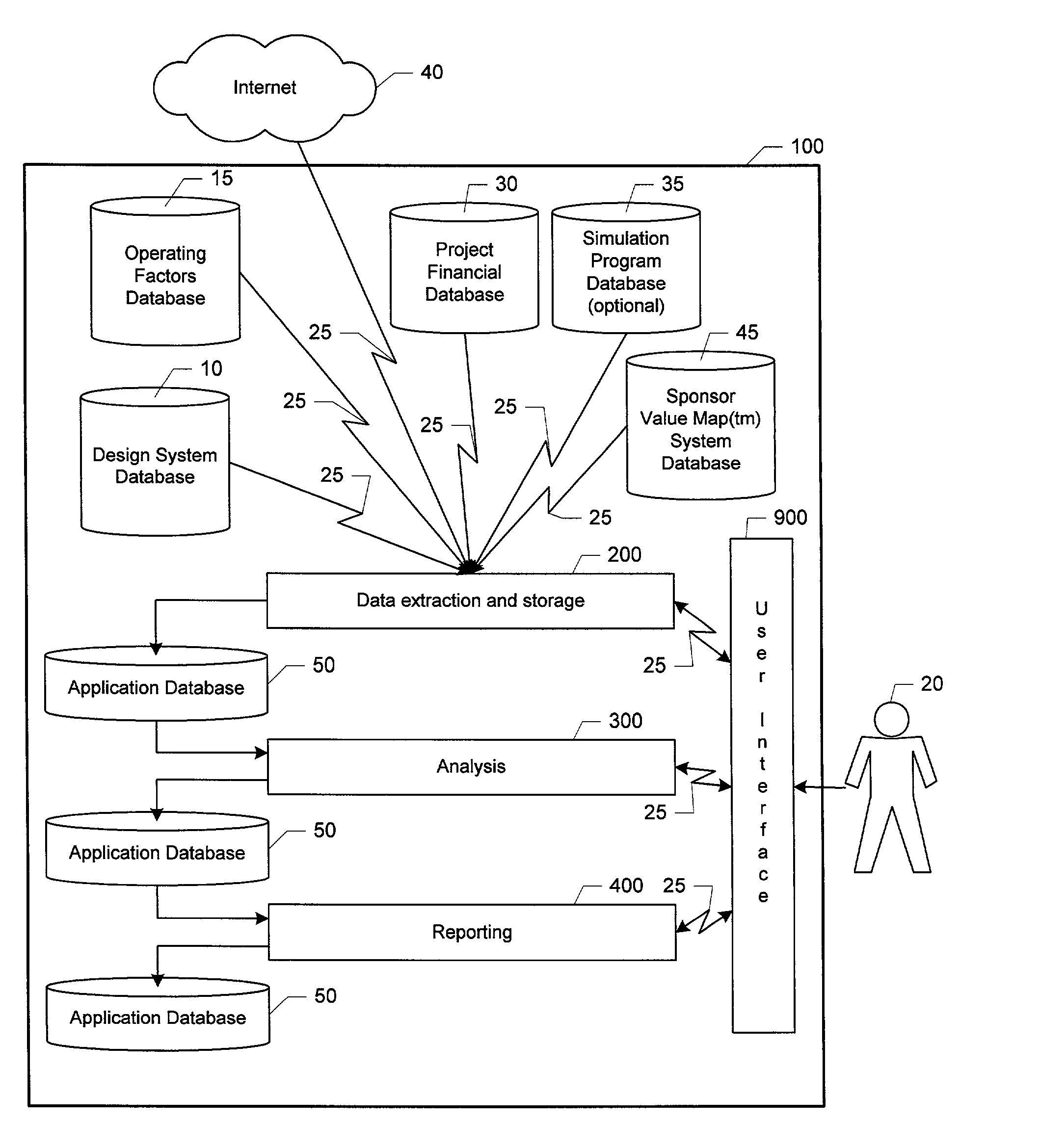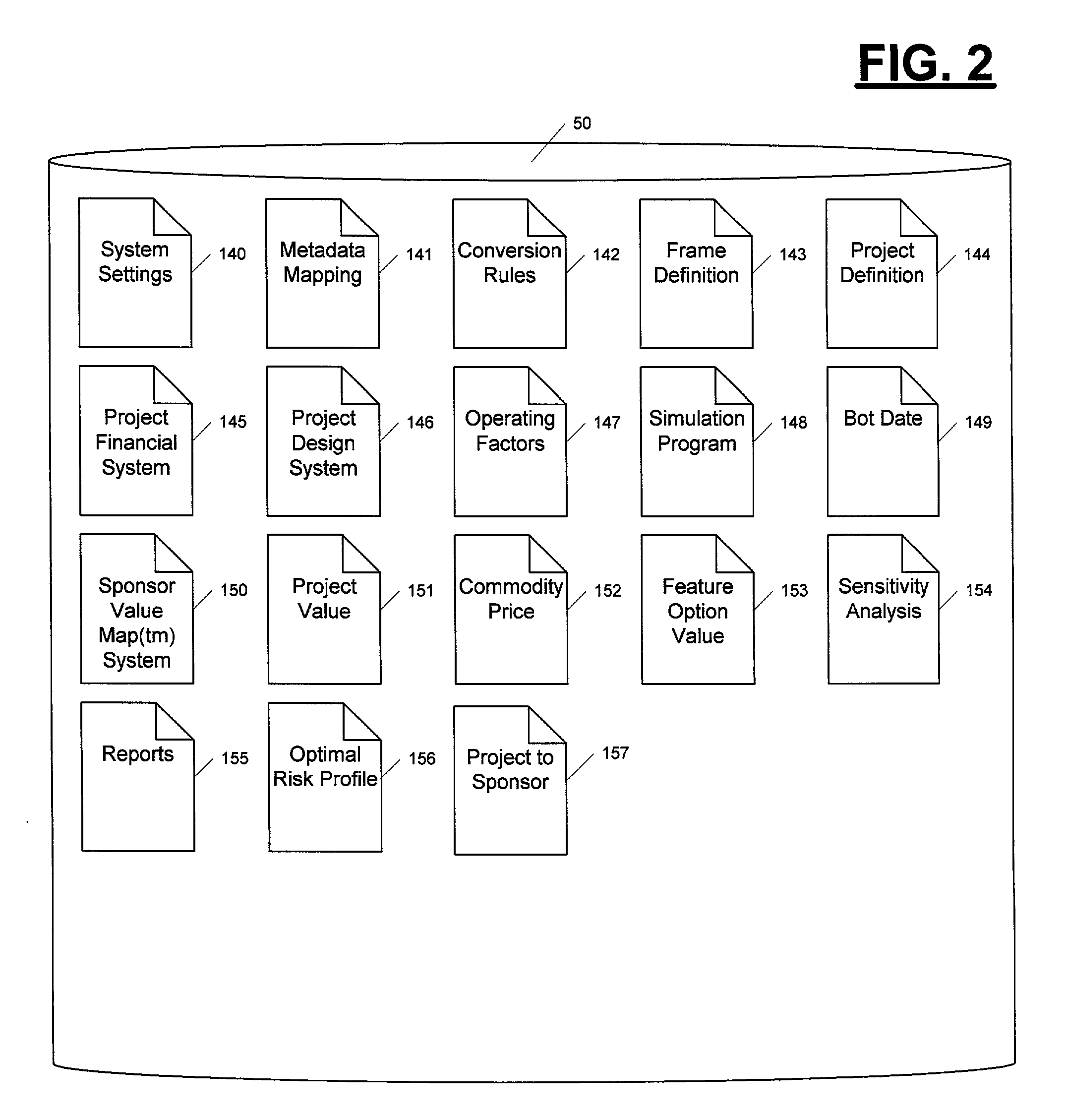Project optimization system
- Summary
- Abstract
- Description
- Claims
- Application Information
AI Technical Summary
Benefits of technology
Problems solved by technology
Method used
Image
Examples
Embodiment Construction
[0068]FIG. 1 provides an overview of the processing completed by the innovative system for project risk and return optimization. In accordance with the present invention, an automated method of and system (100) for project risk and return optimization is provided. Processing starts in this system (100) with a block of software (200) that extracts, aggregates and stores the data and user input required for completing the analysis. This information is extracted via a network (25) from a design system database (10), an operating factors database (15), a project financial system database (30), optionally, a simulation program database (35), the Internet (40) and a Sponsor Value Map® System database (45). These information extractions and aggregations are guided by a user (20) through interaction with a user-interface portion of the application software (900) that mediates the display and transmission of all information to the user (20) from the system (100) as well as the receipt of inf...
PUM
 Login to View More
Login to View More Abstract
Description
Claims
Application Information
 Login to View More
Login to View More - R&D
- Intellectual Property
- Life Sciences
- Materials
- Tech Scout
- Unparalleled Data Quality
- Higher Quality Content
- 60% Fewer Hallucinations
Browse by: Latest US Patents, China's latest patents, Technical Efficacy Thesaurus, Application Domain, Technology Topic, Popular Technical Reports.
© 2025 PatSnap. All rights reserved.Legal|Privacy policy|Modern Slavery Act Transparency Statement|Sitemap|About US| Contact US: help@patsnap.com



